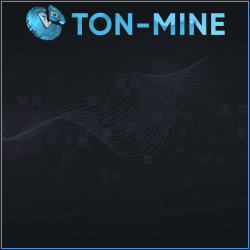ARTICLE AD BOX
The blockchain ecosystem now resembles the chaotic aftermath of the Tower of Babel’s collapse, a technological landscape scattered with broken fragments, each piece speaking a different language, disconnected, and unable to communicate.
Where once there was a grand vision of unified yet decentralized infrastructure, developers now have to navigate a treacherous terrain of incompatible protocols, struggling to rebuild connections to create innovative, more powerful, and interoperable projects.
While this fragmentation used to be just an inconvenience, it has now become a fundamental barrier to Web3’s promise of accessibility and innovation.
Every new blockchain and unique protocol creates another layer of complexity, further undermining Web3’s potential. Bridges and other interoperability tools have been created over the past years to address this issue but they have failed to handle high loads and security vulnerabilities.
Here is where dRPC enters the game. By radically reimagining what the infrastructure of web3 can look like, this provider has found a way to improve resiliency and reduce latency across dozens of blockchains and networks, creating a blueprint for what web3 could look like in the future.

What is dRPC?
Founded in 2022, dRPC is a decentralized infrastructure provider founded with a focus on resilience and low latency.
The system supports developers’ efforts by ensuring reliable performance and efficient handling of requests, even during periods of high demand. dRPC users gain immediate access to more than 90 blockchains and 150 networks, all with low latency, AI-optimized load balance, and insightful analytics to improve their products.

dRPC’s design incorporates advanced tools such as Dshackle and Dproxy, which help optimize routing and distribute workloads efficiently across its network. These components ensure that requests are managed with precision, reducing latency and enhancing the overall user experience.
A pay-as-you-go model ensures that dRPC can be used by projects of all sizes by having them only pay depending on the actual use of the network. Free users also gain access to the same UX, chain AP coverage, and most features of paid users, all without the hidden fees they would incur with the SaaS packages of traditional providers.
Any project can also operate as a consumer or provider, meaning they can further reduce costs while contributing to the network if they so choose.
dRPC Components
The dRPC infrastructure is crafted from meticulously designed components, each contributing to a seamless and efficient experience for teams such as DevOps that rely on its services. These components work together to ensure precise request handling, effective load balancing, and reliable data retrieval, even during periods of peak demand.
The 3 components at the heart of dRPC are Dshackle, Dproxy, and the group of Independent Data Providers. Dproxy receives data requests and determines the best provider, while Dshackle manages the routing and execution of those requests. Independent Data Providers supply the blockchain infrastructure, ensuring decentralized and reliable data access. Let’s take a look at each of them.
Dshackle
At the core of dRPC’s infrastructure lies Dshackle, a customized fork of the open-source library initially developed by Emerald. This fork was tailored specifically to function as a provider-side adapter for the dRPC network. Dshackle’s key capabilities include tracking the current state of nodes, prioritizing them based on reliability, and executing requests with high precision.
Dshackle operates with a hierarchical system, where a main Dshackle instance acts as a central hub, routing requests across the network. Each data provider then installs their own instance of Dshackle, which interacts with the main Dshackle to ensure requests are executed on the most suitable nodes.
A decentralized approach allows Dshackle to efficiently manage requests, whether broadcasting transactions or retrieving specific data and ensures that the system selects the most reliable and up-to-date nodes.
This layered structure provides flexibility to data providers, allowing them to configure their individual Dshackle instances to meet their specific needs, all while remaining integrated within the broader network.
Dproxy
Serving as the primary gateway, Dproxy is responsible for receiving user requests and rerouting them to the best data provider for the user. This rerouting takes place after DProxy carefully considers location, performance, compute power usage, and performance. This evaluation is done by using a weighted sampling system that ensures high-performing providers are chosen more frequently without allowing them to become overwhelmed by excessive requests.
In addition to request routing, Dproxy manages essential operational tasks, including user authorization, CU balance deduction, and the collection of usage statistics. Its additional features, such as custom provider lists and request verification, further enhance the user experience.
Independent Data Providers
dRPC’s decentralized architecture relies on a network of independent data providers who manage their blockchain infrastructure. These providers are independent third-party companies that go through a selection process in which factors like service quality and reliability are evaluated. These companies, which are often small or medium in size and have years of ops experience, can dedicate their full resources or spare capacity to run these nodes.
Providers integrate into the system by installing Dshackle instances that will then interact with the main Dshackle, ensuring smooth interoperability while maintaining control over their operations. This setup not only strengthens the network’s resilience but also supports decentralization by reducing reliance on centralized entities. If one provider downs, then the request will just be rated to another provider, eliminating single points of failure.
Pricing
dRPC offers two service tiers: a free tier and a paid tier. The free tier allows users to make unlimited requests but with one caveat, they can only use public nodes. These nodes, however, can be slower and less reliable than private nodes. Despite this, these nodes are still quite efficient and reliable when compared to today’s standards as they still benefit from load balancing.

The paid tier grants access to all data providers (private and public), offering higher reliability and additional features such as load balancing fallback and request verification. This tier operates on a pay-as-you-go model, where users deposit funds into their accounts, and are charged per request, meaning that projects in the early stages can still benefit from them without breaking the bank.
Each request incurs a cost when using the paid tier, which is measured in compute units (CUs). These CUs reflect the computational resources required to fulfill the request and will vary depending on the method, network used, and other factors.
The cost at this time is about $0.30 per 1 million CUs. The cost of different methods across networks typically is between 0 and 100 CUs per request, with some exceptions like Ethereum’s “txpool_content” (1000 CUs) “trace_replayTransaction” (300 CUs), or “Solana’s getLargestAccounts” (3000 CUs).
Conclusion
dRPC offers an innovative solution to the fragmentation of the blockchain ecosystem by providing a resilient, low-latency infrastructure that bridges an immense number of blockchains and networks. This infrastructure is provided in a way that is accessible to projects at all stages of development and even those just learning the ropes.
The modularity brought by the use of components like Dshackle and Dproxy also allows dRPC to optimize its request routing and execution in a way that few other projects can match, ensuring both efficiency and scalability. This flexibility and precision make dRPC a standout solution in the fast-growing Web3 landscape.
As Web3 continues to gain traction in its efforts to replace the outdated centralization of Web2, a robust infrastructure like the one offered by dRPC could prove pivotal in driving the next phase of innovation.
 8 months ago
402782
8 months ago
402782









 English (US) ·
English (US) ·